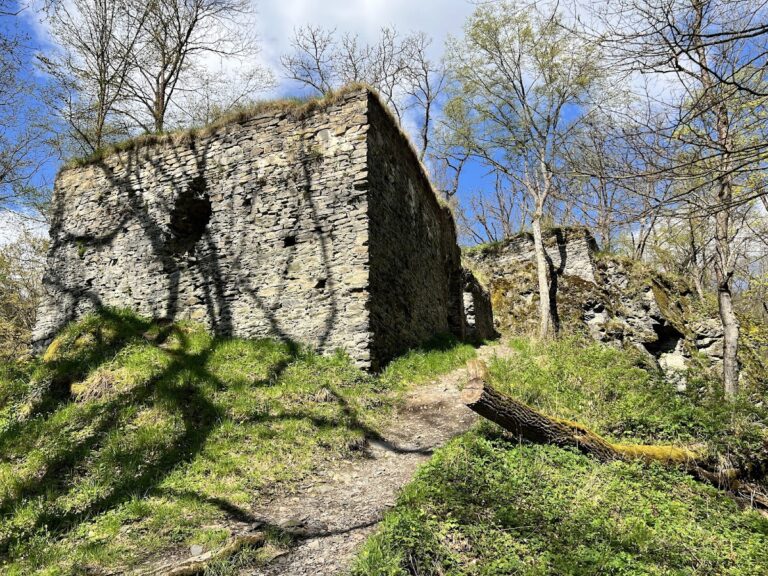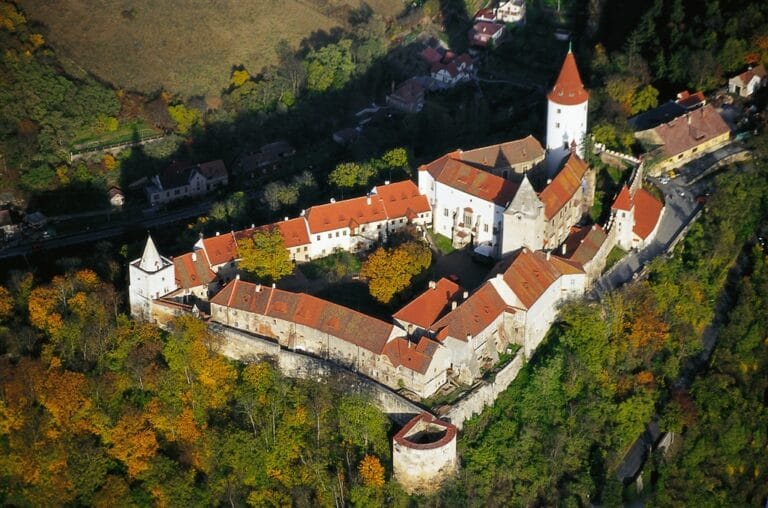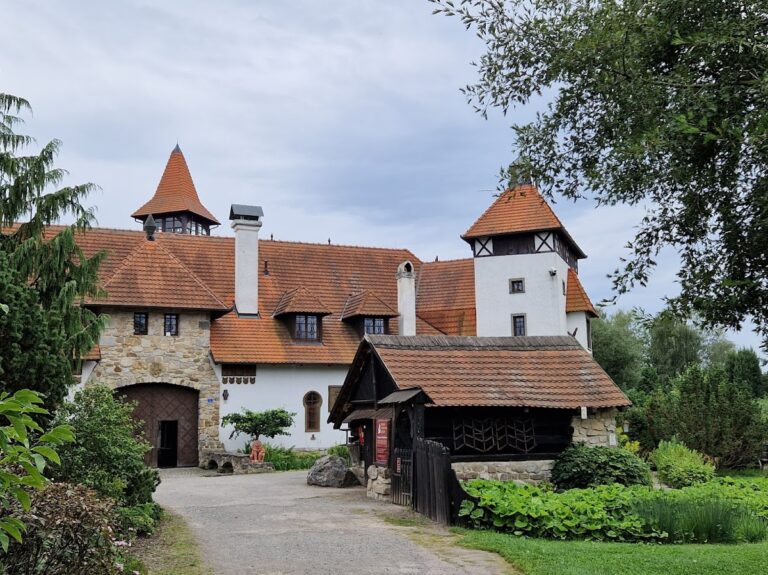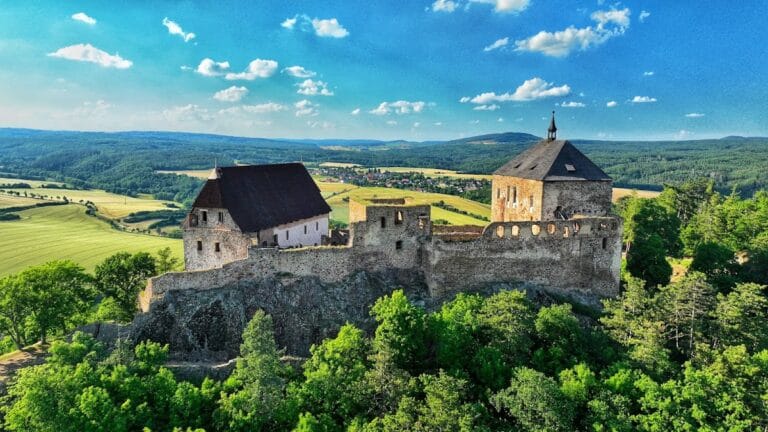Castle Nižbor: A Historic Fortress and Cultural Site in the Czech Republic
Visitor Information
Google Rating: 4.5
Popularity: Medium
Google Maps: View on Google Maps
Official Website: www.zameknizbor.cz
Country: Czechia
Civilization: Unclassified
Remains: Military
History
Castle Nižbor is located in the municipality of Nižbor in the modern Czech Republic. It was established in the 13th century by the Bohemian king Přemysl Otakar II, who took its original name, Miesenburg, from the nearby river Mže, known today as the Berounka. In 1265, King Přemysl Otakar II issued a charter at the castle permitting the foundation of the town of Polička, and he also set up the Podbrdy district office at this site. Some older sources attribute the castle’s founding to his predecessor Václav I.
Throughout the late 13th and early 14th centuries, Nižbor functioned as a royal fortress and administrative hub. It was managed by appointed burgraves, including Dětřich Špaček z Kostelce between 1278 and 1283. King Václav II favored the castle and undertook efforts to expand and strengthen its defenses from 1284 to 1301. Ownership of the castle changed several times: it was taken by the noble Vilém Zajíc z Valdeka in 1307 before returning to royal control in 1319. Subsequently, the castle was pledged to various nobles, such as the Janovic brothers and Duke Rudolf I of Saxony. After 1341, it served as the residence of Moravian Margrave Jan Jindřich.
In 1384, King Václav IV pledged the castle to Konrád ze Zlosiny and later to his cupbearer Jan Kunat. The fortress was captured during the Hussite wars by a Hussite force in 1425 but was soon retaken. Mikuláš Kapoun ze Smiřic and his son Petr carried out its repair afterward. The ownership shifted again in 1510 when Jan Otto z Losu acquired Nižbor, and his son reinforced the castle’s fortifications in 1538.
At the beginning of the 17th century, Emperor Rudolf II granted the castle free estate status to Konrád Šanovec ze Šanova in 1601. Šanovec began Renaissance style renovations but accumulated debt, leading to a sale in 1613 to Fridrich Mičan z Klinštejna. The Mičan family later participated in the Bohemian Revolt. This ownership passed on through marriage when Mandaléna Polyxena z Ladronu, nee Valdštejnová, sold the castle to Pavel Morzin in 1664.
In 1679, Prince Jan Adolf I of Schwarzenberg purchased Nižbor and integrated it with his estate at Křivoklát. The castle changed hands again in 1685 to Arnošt Josef z Valdštejna, whose son, Jan Josef Valdštejn, transformed the Renaissance castle into a Baroque chateau. The Fürstenberg family acquired the castle in 1731, maintaining possession until 1929. During their tenure, Princess Leontýna established a notable library containing about 5,000 volumes.
After World War II, the castle was divided into apartments for housing and underwent roof reconstruction in 1971. In 1997, the local municipality took ownership of the then-dilapidated structure and restored it in the early 2000s. Since 2004, the castle has hosted a multimedia exhibition and information center focused on Celtic culture, including displays related to their daily life, crafts, deities, and warfare.
Remains
Castle Nižbor consists of a two-part fortress built on a sloping promontory overlooking the junction of the Berounka River and Habrový Creek. Its original form included multiple towers, but these offered only limited coverage for flanking defense, making the castle an unusual example of a castellated fortress whose design has been historically misunderstood.
One historical depiction places a tower at the corner of the gatehouse facing the river. Present-day remains include fragments of a northern perimeter wall and a latrine tower on the northern side of the fortress. Inside the castle, there were two main palace buildings. The northern palace partially survives and features a large hall illuminated by grand traceried windows, typical of medieval architecture. A round tower stands at the northwest corner of this structure, and next to it on the east side is a preserved round flank tower. Attached to this tower is a polygonal chapel, initially dedicated to Saint Catherine.
While some believe that a fortified enclosure, or parkán, may have surrounded the chapel, archaeological investigation has not yet confirmed this. One of the massive buttresses supporting the northern palace originally served as an additional latrine tower.
Opposite the northern palace lay the southern palace, which tapered toward the chapel side and was divided internally into at least three rooms in its eastern portion. This palace likely collapsed in the 14th century due to the instability of the ground beneath it. Despite this, the outer wall of the southern palace was repaired and repurposed as a defensive barrier.
Archaeological work uncovered varied terrain levels within the castle’s second courtyard, with the western section located two to three meters below the medieval ground level. The investigations also revealed a neck ditch protecting the castle’s approach and confirmed the site of the main gatehouse along with a tower positioned at the northwest corner of the front castle section. During later Baroque renovations, part of this ditch was adapted to create cellar spaces beneath newer constructions.
In the castle’s courtyard, two sundials remain visible. The left sundial shows the true local solar time and bears a Latin inscription, “Sine sole nequid sum,” which translates to “Without the sun I am nothing.” The right sundial indicates the old Bohemian time system, which counts hours from the previous sunset, and carries the inscription “Sol cognovit occasum suum,” meaning “The sun has counted its setting.” A meridian line marked in the courtyard paving marks the path of the 14th eastern meridian relative to Greenwich, noted by a simple plaque.
Adjacent to the eastern side of the chateau stands the Church of the Exaltation of the Holy Cross. This church was rebuilt in the Baroque style in 1724 by the architect František Maxmilián Kaňka. It is positioned on a cliff edge directly above an earlier Gothic chapel originating from the 13th century, reflecting the site’s long history of religious significance.










